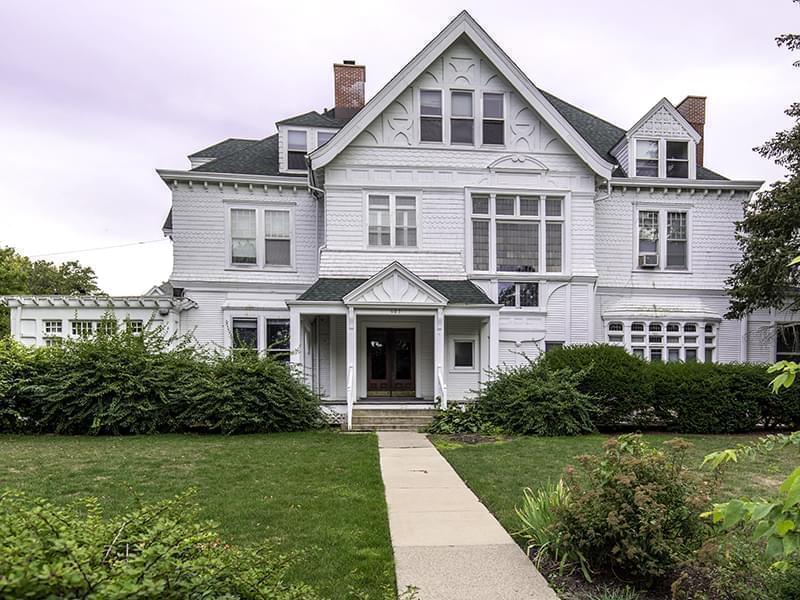3 Buildings To Be Demolished For Champaign Central Expansion Nominated For Landmark Status

Members of the Champaign Historic Preservation Commission. Jim Meadows/Illinois Public Media
Three buildings that the Champaign School Board wants to tear down for the expansion of Central High School have been nominated for local landmark status. The action approved Thursday by the Champaign Historic Preservation Commission occurred the same day that the school board filed formal protests with the city.
The Historic Preservation Commission acted on applications to grant landmark status for the Burnham Residence at 603 W. Church St., the Capt. Edward Bailey home at 606 W Church and the McKinley Memorial YMCA, formerly the Phillippe Mansion, at 500 W Church St. The three buildings are located near each other, and near Champaign Central High School. The Unit Four school district owns the buildings, and plans to tear them down for parking and practice fields for an expanded and renovated high school buiding.
A city Landmark Designation makes it difficult for a building to be demolished or altered.
City staff members say the most important of the three one-time residences is the Burnham Mansion, once home to Albert and Julia Burnham, a notable local banking family, who gave Champaign a hospital and its first public library. The home is also notable for being one of the few surviving residential projects of the 19th century Chicago architectural firm of Burnham and Root.

The Burnham Mansion at 603 W. Church St. in Champaign is one of three properties slated for demolition by the Unit 4 School District that have been nominated for landmark status.
Members of the Preservation and Conservation Association (PACA) of Champaign County, submitted the landmark applications, including board member Susan Appel, who submitted the application for the Burnham home. She told the Historic Preservation Commission that it wasn’t right to dismiss the Burnham home as just an old building converted into apartments that could be torn down because it no longer mattered.
“I think it does matter,” said Appel, a professor emeritus of architecture at Illinois State University. “I think it’s a very, very important piece of Champaign’s history and its built environment. And I would like it to be acknowledged as such.”
But Unit Four School Board President Chris Kloeppel says the Champaign Central High School building is also an important part of Champaign history, and that its future would be jeopardized if they could demolish the three Church Street buildings.
“I think if you looked at these from — OK, these are declared historic and you’re not allowed to tear them down?” said Kloeppel. “That would seriously compromise us staying at Central High School.”
That argument was made by several supporters of Champaign Central High School expansion, who testified before the Historic Preservation Commission. Some said they were members of PACA — including PACA Board Vice President Neil Strack — but didn’t agree with the actions of other members to try to save the three buildings. But others among the nearly 40 people who attended the meeting, testified in favor of landmark status for the three buildings.
Kloeppel and other Unit Four officials present made no formal comment themselves on the landmark nominations at the Historic Preservation Commission meeting. They say the commission can only rule on the historical and cultural significance of buildings, not the hardship that landmark status might cause building owners.
Kloeppel says that sort of judgement can only be made by the Champaign Plan Commission, and the Champaign City Council, which makes the final ruling. The Plan Commission will take up the matter on Nov. 15.
But, following Thursday's meeting, Koeppel said certain legal circumstances may allow demolition to go ahead, even when a building has been given city landmark status. In addition, city officials say the Champaign City Council rarely awards a Landmark Designation when the property owner objects.
Links
- Landmark Status Sought For Buildings Threatened By Champaign Central HS Expansion
- Champaign Central High School On Preservation Group’s Endangered Building List
- Facilities Panel Focuses On Current Champaign Central High School Site
- Unit 4 Officials Hope 3rd Time Is The Charm For Bond Referendum
- McKinley YMCA Sold, to Revert Back to Mansion
